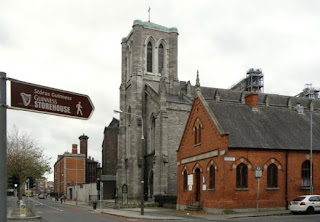Guinness factory Dublin Ireland









St James’ Gate Brewery is a landmark in Irish history. In 1759, Arthur Guinness leased the brewery and signed a contract for brewing on the site for the next 9,000 years. He must have had faith in Ireland’s beer obsession even back then. He paid a mere £45 per year for the lease and got to work quickly expanding the business. England then got the taste for the special stout. In 1769, a few barrels made their way across the Irish Sea to begin a wave of export that would last for years. Guinness hired a man who knew how to make maths work in business. Known as the ‘Student’, William Gossett ended up inventing a statistical hypothesis test in order to help Guinness. Such wizardry was one of many on display in the business. They were selling ale back then, not the stout you and I know from today. It wasn’t the black stuff or the ‘porter’, but something more like Guinness Original. A couple of years before Arthur Guinness died in 1803, what we know to be Guinness stout was up and running and becoming more and more popular by the day. His son and heir took the business to new heights and by the 1830s they became the biggest beer in Ireland; bigger than their rivals Beamish in Cork. The brewery grew bigger and bigger at St James’ Gate throughout the 19th Century, until in 1886, it became recognised as the largest brewery in the world, making 1.2 million barrels of beer every year.
In the next century things would change in Dublin, however. During the 1930s, Ireland became the Irish Free State and they passed a ‘control of manufacturers act’ that led to the business being moved to brewing in London for the first time in its life. It took some time to completely leave Irish soil, but, by 1974, St James’ Gate finally made its last barrel. Through the 1980s, amidst the turbulence on Wall Street and in the City, Guinness ended up losing its family connections and finally in 1997 merged with hospitality company Grand Metropolitan to become Diageo plc. Following this the company then slowly aimed to move their manufacturing back to St James’ Gate to return to where it once began. This finally became true in 2005.But St James’ Gate was no old horse. The brewery is now one of the most advanced in the world, making over 8 million kegs of beer every year. The brand welcomed the ability to market its homecoming. Labels now proudly state ‘brewed in Dublin’.
No comments:
Post a Comment